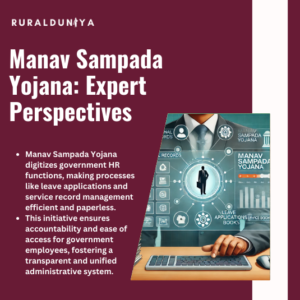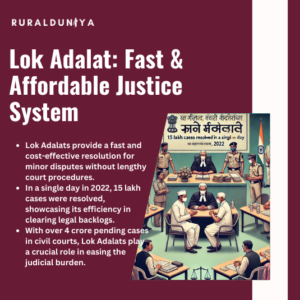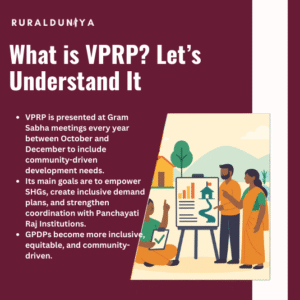Namaste, are you aware? The GPDP refers to the development plan of the Gram Panchayats. All stakeholders participate in the preparation phase to ensure that community needs can match available resources.
“The Greater the power of the Panchayats The better for the People”
Mahatma Gandhi
GPDP Yojana: A Holistic Approach
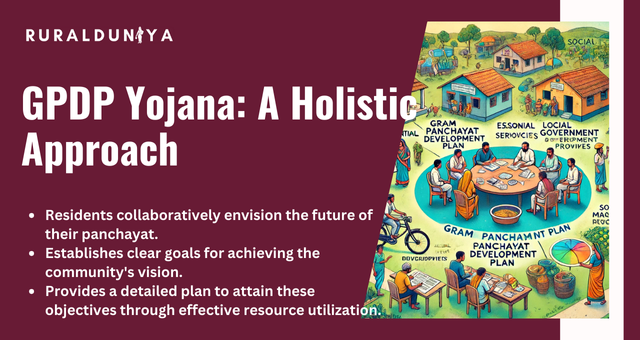
GPDP (Gram Panchayat Development Plan) focusing on economic development and social justice in India.
Gram Panchayats (GPs) serve as the local government and have the responsibility of providing essential services to the local population and addressing the needs of the disadvantaged and marginalised individuals.
This can only be accomplished by executing carefully devised strategies through effective and accountable utilisation of accessible resources. The Panchayat Development Plan performs three fundamental functions:
- It offers a conceptualization of how the residents envision the appearance of their panchayat.
- It establishes explicit objectives to accomplish that vision.
- Provides a strategic course of action to attain those objectives.
India has approximately 250,000 Gram Panchayats.
GPDP Sankalp
The Gram Sabha is responsible for conducting a visioning exercise based on the findings of the Development Status Report.
The purpose of the visioning exercise is to promote impartiality in the planning process and empower individuals to feel a feeling of ownership over the planning process.
The vision document aims to unequivocally demonstrate GP’s dedication to enhancing the effectiveness and efficiency of its operations in order to enhance the quantity and quality of fundamental services.
Additionally, it should assist the General Practitioner in undertaking the Sankalp.
GPDP Themes
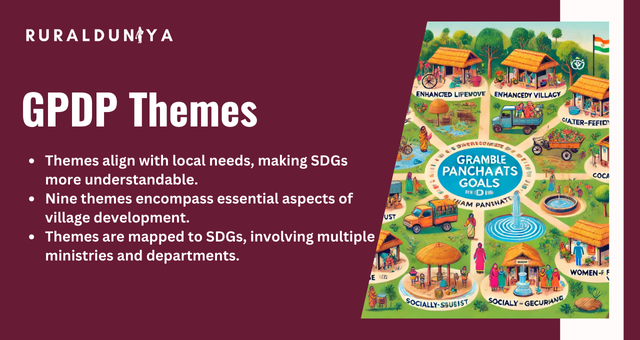
In order to make the universal and progressive SDGs more local and understandable for Gram Panchayats and Elected Representatives, the Ministry of Panchayati Raj has taken a thematic approach connected to 17 SDGs based on Expert Committee recommendations.
Nine themes were chosen because local elected representatives (ERs) and the community could relate to them. Themes are mapped to SDGs, nodal Ministries/Departments, and major State Government departments:
- Poverty Free and Enhanced livelihood Village
- Healthy Village
- Child Friendly Village
- Water Sufficient Village
- Clean and Green Village
- Village with Self-sufficient Infrastructure
- Socially Just and Socially Secured Villages
- Village with Good Governance
- Women Friendly Village
GPDP Gram Sabha Schedule
Two Special Gram Sabhas are necessary during the Campaign. The first Gram Sabha should foresee and prioritise needs based on DSR gaps. Frontline personnel must make a brief, structured presentation on all line Department actions.
The draft Gram Panchayat Development Plan, including VPRP and Departmental Village Action Plan, will be presented to the 2nd Gram Sabha for approval.
GPDP Gram Sabha
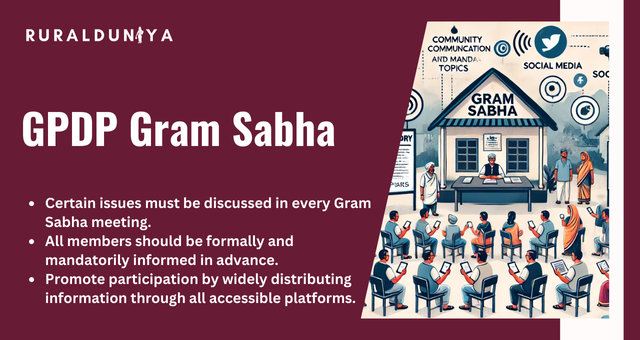
While the Gram Sabha has the freedom to address any matter concerning the Gram Panchayat, there are certain topics that must be discussed without fail.
To enable efficient involvement in the Gram Sabha, it is necessary for all members to be formally and mandatorily informed in a timely manner.
To promote more community participation, it is important to widely distribute information through all accessible platforms, including social media.
Gram Sabha Quorum
The meeting of the Gram Sabha must adhere to the quorum requirements specified in the applicable Panchayati Raj Acts of the State.
If the initial meeting is delayed due to insufficient attendance, the meeting will be rescheduled for a later date and the process will follow the guidelines outlined in the State Panchayati Raj Act.
Nevertheless, the objective should be to achieve a minimum attendance of 10% of the Gram Sabha in order to ensure a genuinely significant and participatory process.
Additionally, it can be seen as the inclusion of at least one resident from each home in the Gram Sabha, as observed in many Gram Panchayats.
GPDP Vibrant Gram Sabha
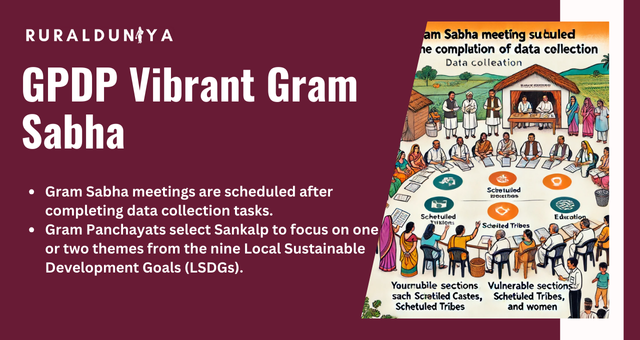
A Vibrant Gram Sabha will be scheduled following the completion of data collection, including primary and secondary data, as well as other related tasks.
The designated facilitators must facilitate community mobilisation, which includes representation from vulnerable sections like as Scheduled Castes/Scheduled Tribes/Women, during the Gram Sabha.
GP selected Sankalp to focus on one or two themes from a total of 9 LSDGs.
GPDP VPRP Integration
It aims to create a GP-developed economic and social development plan for the community. It should suit people’s needs and priorities with available resources.
Understanding local needs and prioritising them according to resources requires community participation. As poor institutions, SHGs and their federation design and implement economic development and social justice actions.
The NRLM framework requires the SHGs to participate in Gram Sabhas and other GP forums, provide feedback through community based monitoring and support GPs in their development initiatives by preparing Village Prosperity Resilience Plan (VPRP) and integrating it into GPDP.
GPDP Training
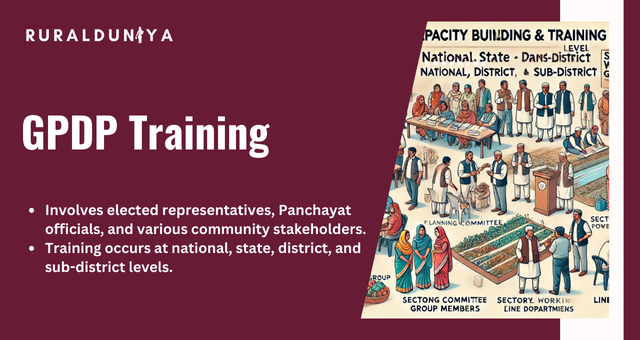
Panchayat capacity building and training stakeholders are generally elected representatives and support functionaries.
However, many institutions and human resources are active in Capacity Building & Training at the national, state, district, and sub district levels in core governance functions like planning and implementing development programmes.
Block and District development planning requires elected representatives, Panchayat officials, Planning committee members, Sectoral Working Group members, SHG federation leaders, line department officials, community leaders, civil society organisations, and all relevant agencies.
GPDP Plan
Prepare Gram Panchayat Development Plans to implement flagship national projects. Panchayat Development Plans (PDP) must be comprehensive and participative, bringing together Central and State Government plans on 29 subjects from the Eleventh Schedule.
Intermediate/Block and District Panchayats prepare BPDPs and DPDPs, respectively.
GPDP Planning Process
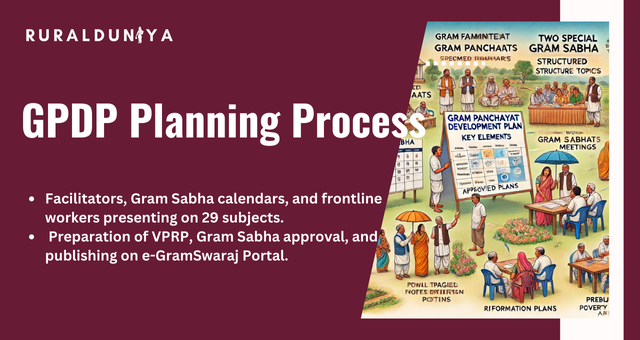
Let’s talk about Gram Panchayat Development Plan planning and process.
- Appointment of facilitators for Gram Panchayats/Rural Local Bodies.
- Finalisation of Gram Sabha calendars.
- specific Frontline Workers from all Departments to present structured topics at Gram Sabha Meetings on specific days for 29 subjects.
- Established 2 GPDP Special Gram Sabhas.
- Implemented Public Information Boards in Gram Panchayats and uploaded geo-tagged photos to the PPC Campaign Portal.
- Uploading geo-tagged photos of ongoing Gram Sabha meetings.
- Prepared VPRP for GPDP integration and Gram Sabha approval.
- GPDP preparation and e-GramSwaraj Portal publishing of approved plan.
GPDP Plan Download
Anyone can use the e-GramSwaraj portal and obtain the Gram Panchayat Development Plan plan for any year, regardless of the level of panchayat they belong to.
GPDP Facilitator
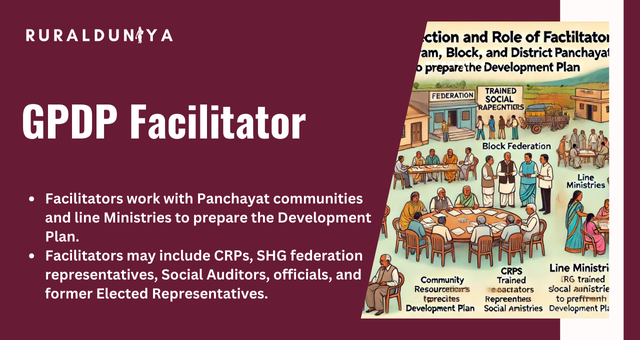
State/UT shall select a facilitator for each Gram/Block/District Panchayat. Facilitators must collaborate with Panchayat communities and all line Ministries to prepare the Development Plan.
States/UTs may nominate Community Resource Persons (CRPs) or SHG federation representatives who helped prepare the VPRP, trained Social Auditors, officials, former Elected Representatives, etc. as facilitators.
GPDP Guidelines
The Gram panchayat (GP) resources, the status assessment, the planning process with people’s participation, the project plan, and the implementation of the Gram Panchayat Development Plan were all thoroughly detailed in the guidelines.
Egramswaraj
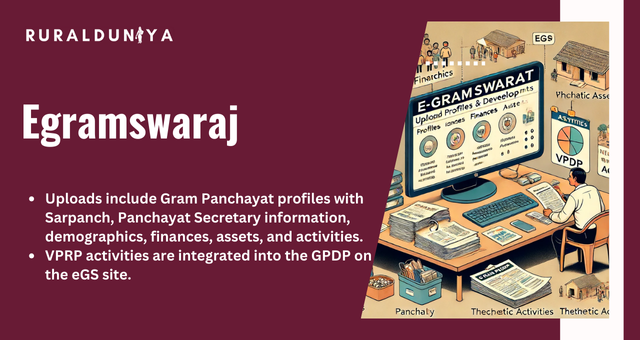
The plans created through the above procedure will be uploaded to e-GramSwaraj (eGS) application along with Gram Panchayat’s complete profile, including Sarpanch & Panchayat Secretary information, demographics, finances, assets, thematic activities, etc.
Gram Panchayat offices may keep hard copies of the plan for public disclosure. VPRP activities are now under the Gram Panchayat Development Plan activity drop-down under relevant subjects in the eGS site.
Meeting Online
The Gram Panchayat (GP) has the option to adopt a new Sankalp or prioritise a new subject for the creation of the Gram Panchayat Development Plan for the year 2024-25, with the approval of the Gram Sabha.
The process of prioritising themes for the ‘Sankalp’ initiative will be conducted on the website (https://meetingonline.gov.in), and the resolutions of the Gram Sabha will also be uploaded on the same website.
GPDP Portal
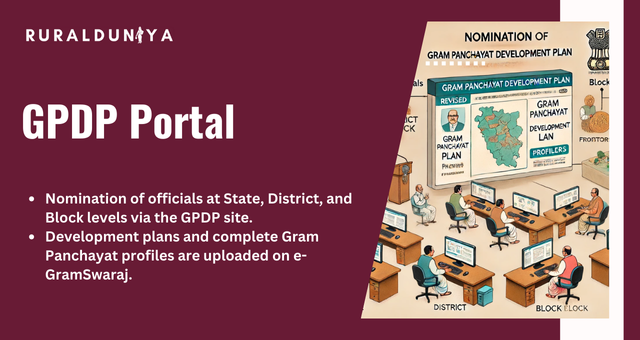
The nomination of Nodal officials (at the State, District, and Block Level) and facilitators will be facilitated using the Gram Panchayat Development Plan site.
The plans that are developed using the aforementioned approach will be uploaded on the e-GramSwaraj (eGS), along with the complete profile of the Gram Panchayat.
GPDP Report
Analytical Reports, Panchayat Profiles, Planning, Centre Sponsored Schemes Data, Accounting and Audit are some of the numerous sorts of reports that can be seen on the e-GramSwaraj portal that pertain to the Gram Panchayat Development Plan.
Takeaway
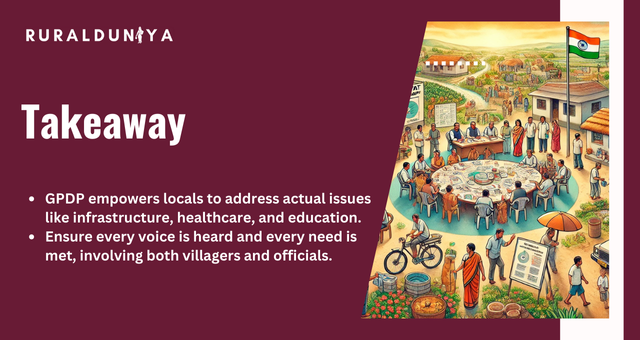
The GPDP empowers local communities to control their destinies. It focuses on actual issues including infrastructure, healthcare, and education to enhance local lives. Not just paperwork, but making sure every voice is heard and every need is satisfied.
Future Gram Panchayat Development Plan success requires everyone—villagers to officials—to help turn promises into deeds and dreams into reality. Together, we can build stronger, happier communities where everyone has a chance.
FAQs
Why is GPDP important?
To utilise the existing resources is crucial for both economic progress and social justice.
Who prepares GPDP?
Panchayats are required to prepare the Gram Panchayat Development Plan.
What is the VPRP plan in GPDP?
Community demand plan generated by Self Help Group network can be included into Gram Panchayat Development Plan.
Who is head of Gram Panchayat?
A sarpanch is the elected leader of a village-level statutory authority known as the Gram Panchayat.
What are the three levels of panchayat?
The Panchayati Raj Institution (PRI) is comprised of three tiers: Gram Panchayat, Block Panchayat, and Zila Panchayat.

Nishank is a social impact enthusiast with a solid foundation in public policy, micro-enterprise, and agribusiness. Growing up in a farmer’s family has given him a profound connection to rural communities, fueling his passion to empower people towards self-reliance. He completed his undergraduate studies at the Delhi University and earned a master’s degree in Rural Management from National Institute of Rural Development & Panchayati Raj in Hyderabad.

